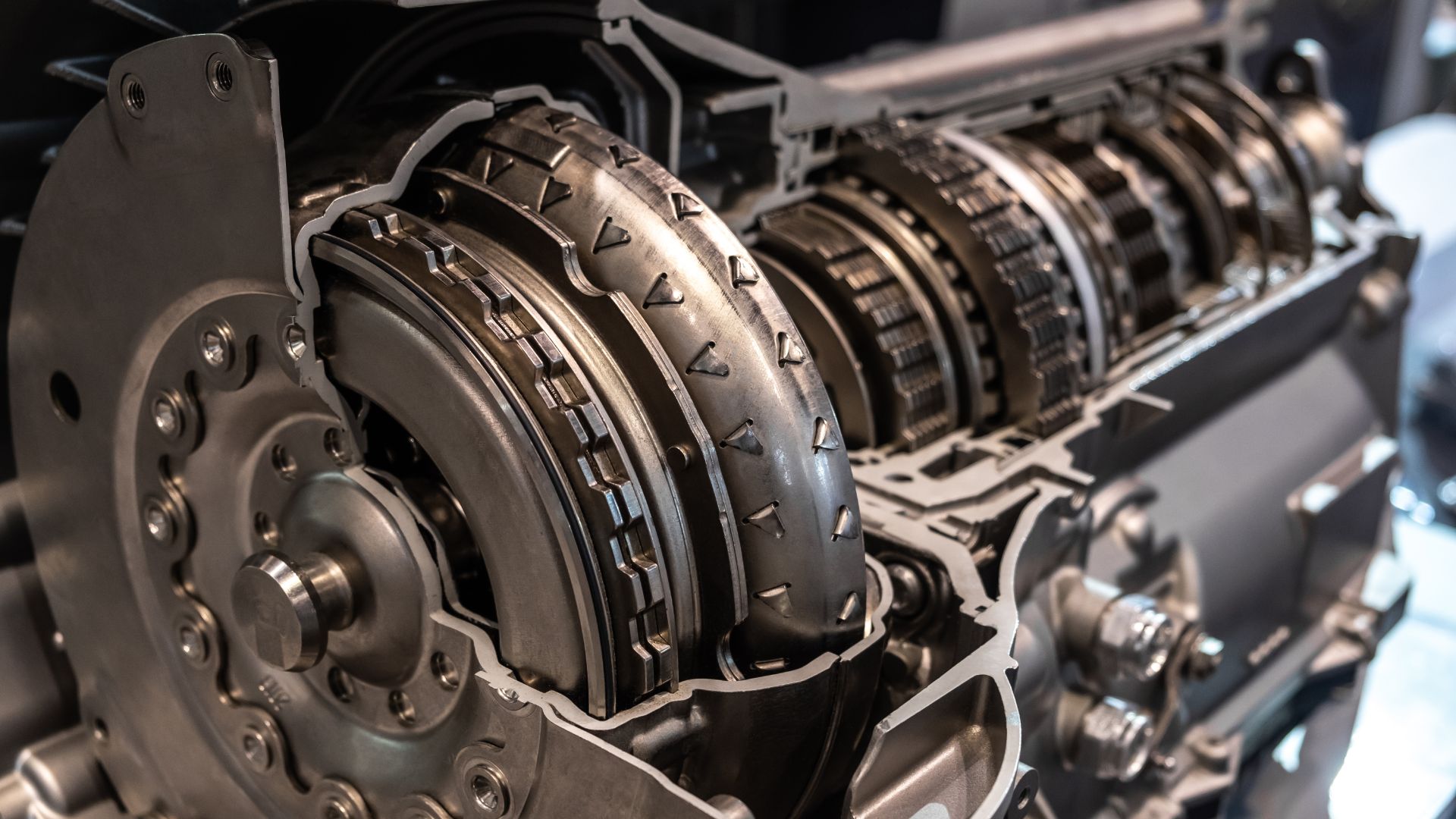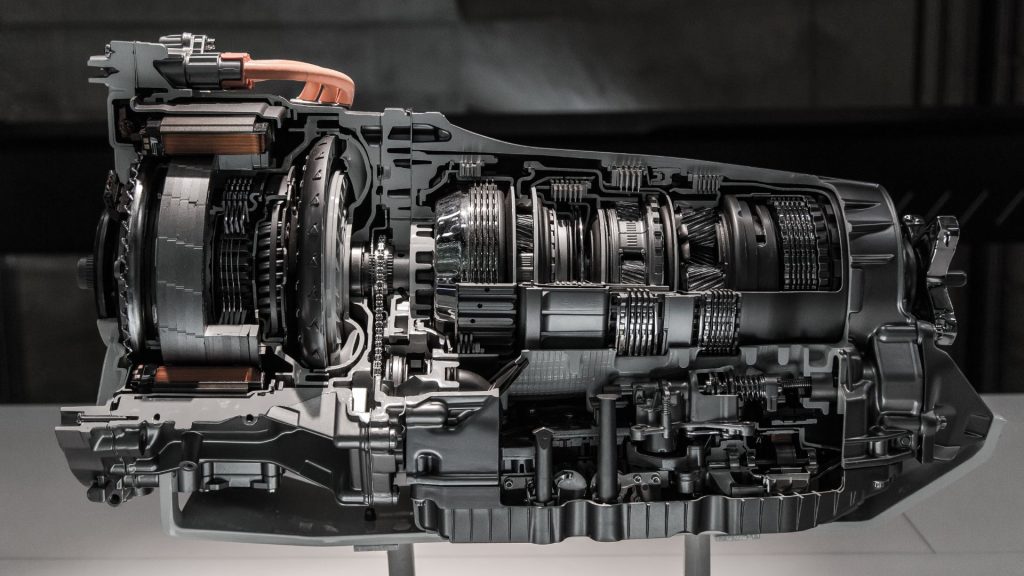Bad torque converter symptoms — causes and fixes
Identify the telltale signs of a faulty torque converter for smoother driving.

The clutch represents the bond between the transmission and the engine in cars with a manual gearbox. However, automatic cars don’t use the clutch in a traditional sense, but rather a device called a torque converter. It’s no wonder, though, that bad torque converter symptoms are a big problem for your transmission if they occur.
To help you figure it out on time, our team made this guide to lead you through the main signs of a failing torque converter. If not treated on time, this could lead to severe transmission faults, so let’s see how you can spot it early.
What’s a torque converter and what does it do?

If you are even slightly into cars, you’ve probably heard of the two expressions that determine the power of the engine – horsepower and “torque”. Torque represents the potential energy derived from the crankshaft which spins due to the action of the pistons triggered by internal combustion.
In an automatic car, the torque converter replaces the clutch system and translates that power from the engine to the transmission. It’s also the reason why your car can come to a stop at the traffic light without the engine shutting down.
Torque represents that “push” that kicks in during the peak in the revolutions per minute (RPM) range of your engine. In automatic cars, the torque converter steps in when you press the gas pedal by pumping transmission fluid through the converter which translates the power to the wheels.
The torque converter seems like a plain device, but it’s much more complex than it seems. There’s the front cover of the converter which is attached to the engine’s flywheel. As the engine spins, the flywheel rotates this part and the fins of the turbine.
There’s also a pump that pushes the fluid towards the other side of the converter, all the way to the output of the turbine. It’s further connected to the transmission, so the higher the gas pedal pressure, the more transmission fluid will flow through the pump and into the turbine.
When the pressure is lower, the fluid retracts through the turbine fins and the power output to the transmission is lower. It sounds straightforward, but there are a lot of moving parts within the converter, and they can sometimes wear off due to friction or transmission fluid leaks.
Common signs of a bad torque converter

So, now you understand how the torque converter acts similarly to the clutch in a manual transmission vehicle. It represents the connection between the engine and the transmission, so a failing converter is never a good sign.
Luckily enough, these are some obvious signs of a failing torque converter that you might recognize while driving:
- Gear slippage
- Transmission fluid leaks
- Troubles shifting into a specific gear
- Contaminated transmission fluid
The transmission can even overheat if there’s a faulty torque converter, so you should also pay attention to dashboard lights. If you see an increasing temperature gauge related to the appearance of a transmission fault light, it’s a sign that something’s bad with the converter or the transmission itself.
Overall, any sort of problem involving a torque converter might cause rough gear shifting and vibrations coming from under the car’s floor. It’s a sign that the transmission system isn’t working properly, and you should inspect the converter.
Slipping gears
One of the most obvious symptoms of a bad torque converter is gear slippage. It’s the lack of linear power distribution to the wheels that occurs right after a gear shift. You might experience difficulties in acceleration and your car struggling to pull regularly as soon as the shifter gets in a higher gear.
It can happen due to numerous reasons but the most common ones are insufficient transmission fluid passing through the converter and regular wear. The turbine fins and other components within the converter can malfunction, causing it to slip out of gear.
Besides rough shifting and delayed acceleration after a gear shift, it can also manifest through poor fuel economy. So, if any of these signs occur, you should have your torque converter inspected.
Transmission fluid leaks
If you notice a puddle of red or pink fluid underneath your car, it can be a sign of leaking transmission fluid. Proper fluid level is crucial for the converter to translate the engine’s power output to the transmission through hydraulic pressure.
You can also check the transmission fluid reservoir that’s usually located around the engine. It’s also designated and has a dipstick just like engine oil which you can use to measure the level of fluid. If it’s near the “low” mark, you might be dealing with a leak.
You can check the level in the same way as with engine oil, simply pull the dipstick out, wipe it clean, and return it to the reservoir. Take it out again to get an accurate reading. Transmission fluid leaks often occur due to worn-off torque converter seals, but the leak can also be anywhere within the transmission system.
The shifter gets “stuck” in a gear
If your gearbox won’t shift in the “park” or “drive” gear, it can be a common symptom of a bad converter. It happens due to worn-off parts within the torque converter, such as the clutch assembly and gear solenoids.
Your shifter might work well during the drive, but you might have trouble putting it into reverse. It’s a sign you should check the torque converter and transmission fluid level to prevent putting too much pressure on the shifter which could even lead to a transmission rebuild.
Contaminated transmission fluid
Finally, the last symptom is transmission fluid contamination, and you can check it by pulling out the dipstick out of the reservoir as we discussed. Take a look at the transmission fluid, and if you spot any metal shavings, dirt, or simply a dark fluid color, it means your transmission fluid is contaminated.
It can ruin your transmission system if you keep driving that way, so make sure to immediately have a torque converter inspected. You might also have to flush the transmission fluid by pulling out the old one and pouring new fluid into the system.
Our take
Now you know all about the main bad torque converter symptoms so you can act on time and have it inspected and replaced on time. It costs anywhere between $150 and $350, but the cost of replacement can go up when the cost of labor is added.
However, not only does it ensure proper gear shifts without slippage, but it also potentially saves your transmission from undergoing a complete rebuild. The sooner you act after noticing any of the symptoms in this guide, the lower the consequences of a bad converter will be for your transmission.
What happens when your torque converter goes bad?
If your torque converter goes bad, your car’s transmission will have difficulties shifting gears and you might experience rough shifting, vibrations, or gear slippage which can even be dangerous due to lack of acceleration.
How do I test my torque converter?
You can test your torque converter by putting the shifter into drive mode and revving the car for a second while still holding the brake with the other foot. Check for the torque converter specifications for your model and if the RPMs go too high, you might have slippage and a bad converter.
What are the signs of a torque converter problem?
The signs of a torque converter problem include transmission vibrations, rattling noise, gear slipping, and contaminated transmission fluid.
What does a failing torque converter sound like?
A failing torque converter might produce a rattling noise while driving, especially during gear shifts.